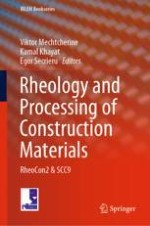2020 | OriginalPaper | Buchkapitel
Quantifying Constructability Performance of 3D Concrete Printing via Rheology-Based Analytical Models
verfasst von : Jacques Kruger, Stephan Zeranka, Gideon van Zijl
Erschienen in: Rheology and Processing of Construction Materials
Aktivieren Sie unsere intelligente Suche, um passende Fachinhalte oder Patente zu finden.
Wählen Sie Textabschnitte aus um mit Künstlicher Intelligenz passenden Patente zu finden. powered by
Markieren Sie Textabschnitte, um KI-gestützt weitere passende Inhalte zu finden. powered by
